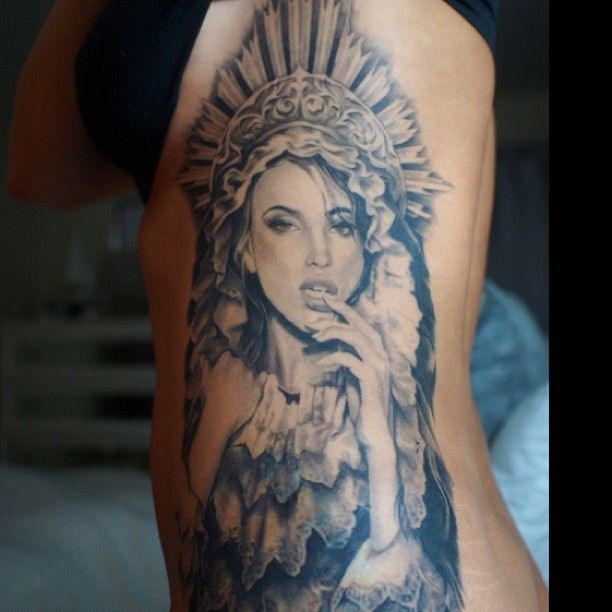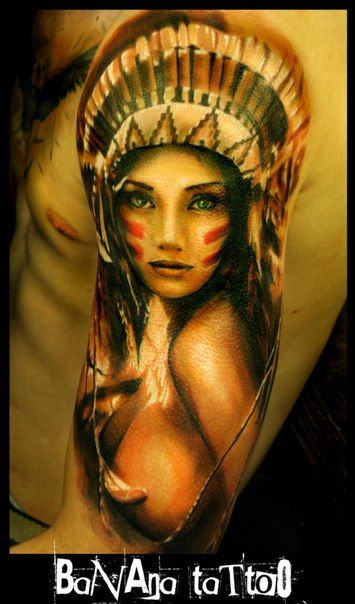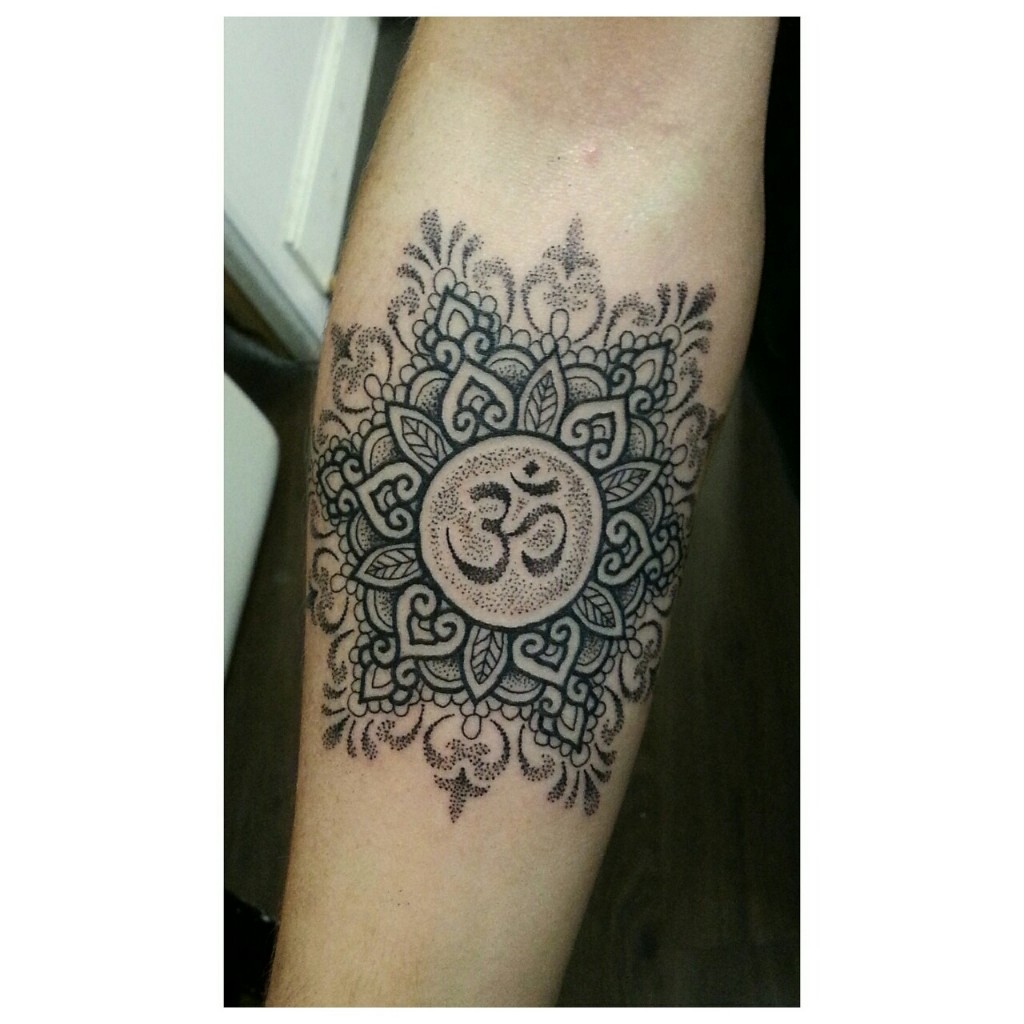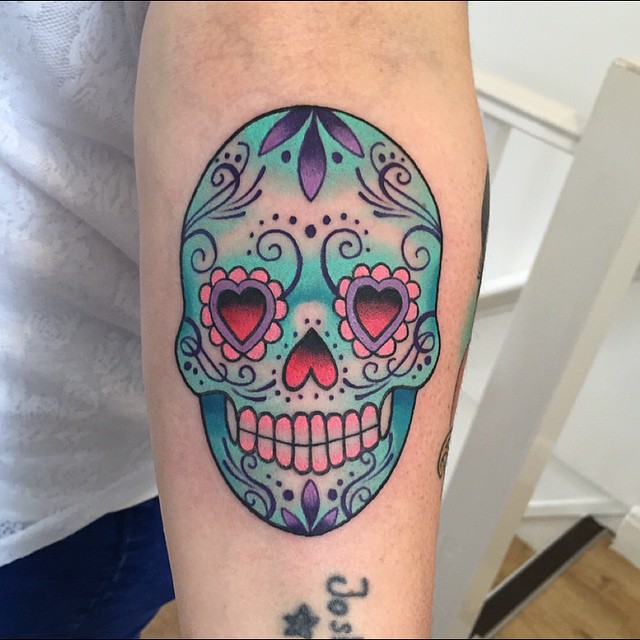Our guest blogger is psychologist, freelance writer and creator of the blog Dream Electric, Ally Richards. In this post she considers cultural appropriation and tattoos.
Heritage often acts as a source of inspiration for tattoos. It’s also equally common for tattoo collectors to adorn their bodies with representations of other cultures – perhaps memories of places visited or finding inspiration in another population’s practices.
When getting a tattoo referencing a culture that is not your own, issues can arise. We cringe at the (often misspelt) Chinese character tattoos that attracted popularity in the 90s and the use of other cultures as “exotic” or “edgy”. Beyond these examples is the possibility that the tattoo will provoke offense in members of the cultural group referenced and the wearer may be accused of “cultural appropriation”.
What is cultural appropriation? A quick google quickly evidences the controversy behind the term – angry voices making claims of racism and further angry voices proclaiming freedom of expression. In brief, cultural appropriation refers to a majority group who adopts the symbols and signs of a minority group. A power dynamic is inherent; the privileged group (often white and western) takes from an oppressed and marginalised group. This differs from “cultural exchange”, in which the trading between groups is mutual. The power lies in the hands of the majority group – they get to choose which symbols they take on and stand to benefit from this appropriation. This “accessorisation” trivialises and erases the oppression experienced by the minority group.
But I’m not racist, I just think it’s pretty…
Headdress by Ben Klishevskiy
A recent example of cultural appropriation is the wearing of “Red Indian headdresses”, which have become popular accessories. The headdresses (known as warbonnets) have a deep spiritual significance in Native American culture. Native Americans are also a minority group who have a history of oppression and suffering at the hands of Americans. The wearing of the headdresses encourages stereotypes and when worn with skimpy festival-wear it promotes the sexualisation of an ethnic group which already has a high level of sexual assault perpetrated against them. This year Glastonbury banned the sale of the headdresses at the festival for these reasons.
Mandala by Jonathan Toogood
But what about tattoos? Unlike a culturally insensitive costume, a tattoo is usually carefully considered and a lifelong commitment, not a trend to be picked up when convenient. However, by the above definition, cultural appropriation is very common in tattoo culture. Many white people sport tribal blackwork designs inspired by Maori culture. Mexican “sugar skull” designs and mandala tattoos inspired by Hindu and Buddhist practices have become increasingly popular. All of these designs come from cultures that have been historically (and in many cases still currently) oppressed by white people. Is this problematic?
Skull by Mike Harper
You are free to present your body in whichever way you choose, and your tattoos are your own choice. However, others also have the right to be offended and express this. If you decide to get a tattoo representing a minority culture, you should be prepared for this possibility. Although your intention is not to be racist, others may see it as such.
If you are in the white majority, it is not for you to decide what is and is not offensive to other groups. Inform yourself of the history and significance around your chosen design and discuss this with members of that community. You may find it helpful to speak to a tattoo artist from that culture. It may be possible to incorporate the aspects of the symbol you find appealing into a more culturally respectful tattoo. Above all, regardless of the eventual choice you make, being thoughtful is key. A tattoo is for life and you don’t want to be spending your later years defending it! Careful consideration of the cultural context around your tattoo may avoid unintentional offense and embarrassment in the future.




Brilliant post, it’s not a topic I see discussed enough in tattooing culture. Getting these sacred and meaningful parts of other cultures tattooed on yourself is so problematic, and only someone whose culture it is from can tell you if they feel it is ok. I’d love to see a move away from sugar skulls, mandalas and native american themes in particular.
Fully agree with you Kitty.
Entirely agree there with you. You have the right to get what you wa t tattooed, but they also have the right to be offended. You can’t control or dictate others’ reactions or responses.
This article is educational although part is incorrect. Mandalas have a larger classification than just Buddhist and Hindu. There are all kinds of mandalas used for different reasons and for different religions. To say that the use of mandalas is cultural appropriation is too broad of a statement. Also isn’t cultural appropriation a dominant group adopting the culture of an oppressed group of people? Not just Americans culturally appropriate…
“Tattoo historian Anna Felicity Friedman suggests a couple reasons for the “Cook Myth.”[48]:18–20 First, modern European words for the practice (e.g., “tattoo,” “tatuaje,” “tatouage,” “Tätowierung,” and “tatuagem”) derive from the Tahitian word “tatau,” which was introduced to European languages through Cook’s travels. However, prior European texts show that a variety of metaphorical terms were used for the practice, including “pricked,” “marked”, “engraved,” “decorated,” “punctured,” “stained,” and “embroidered.” Friedman also points out that the growing print culture at the time of Cook’s voyages may have increased the visibility of tattooing despite its prior existence in the West.” Taken to it’s logical conclusion calling it Tattooing itself may be cultural appropriation. http://www.pbs.org/skinstories/history/
https://www.smithsonianmag.com/history/tattoos-144038580/
I’m tired of this constant whining about cultural appropriation, it’s my body and if I want to get a sugar skull because it reminds me of all the time I spent in Mexico too bad for all you over sensitive complainers. I get a tattoo for my enjoyment, not for anyone’s dissemination of it. My family background is Russian and if you want to get a big Russian Bear tattoo and you are Asian, frankly I could care less!
Bit that’s been stated? Yoi can do what you want. But you cant control or dictate others reactions to it.
Pretty cool https://tattooli.com
So this is something I question alot because of my own tattoo choice. When I was 19 I got a tattoo of a geisha on my leg. My favorite book is Memoirs of a Geisha, which I have a deep love for and is an important part of my life as a shy kid who used reading as escapism. The design was created as a representation of the main character Chiyo/Sayuri. This was 12 years ago and now as a more conscientious woman in my thirties I feel pangs of shame for my choice and grapple with it being a form of cultural appropriation
hello, beautiful blog. thank you: tattoos types website
my favorite tattoo. the rock tattoo
lavender spring tattoo , flowers have a meaning according to their species, which in turn is related to cultures and beliefs.
thanks for the post
Wow nice design, I saw many new tattoo design at Tattoo Design Inc. Beside from fashionable and latest tattoo designs this studio also have expertise in the traditional and religious tattoo.
How Are You. Jason Momoa Height.I would like to take the ability of saying thanks to you for the professional suggestions I have usually enjoyed browsing your site.Excellent post. Known for her beautiful voice and attractive acting,
Hello How Are You.Mark Wahlberg Height. This is the blog I love to read and watch. This blog is all about the facts of awesome and unique information for all users. I love to read this blog because this is providing amazing information
Hey admin how are you. Kendall Jenner Height. I am a freelancer and I daily visit to read this blog because this is really providing amazing content. I daily visit to read this blog and its really helpful for all of Us. Thanks for sharing this amazing blog.